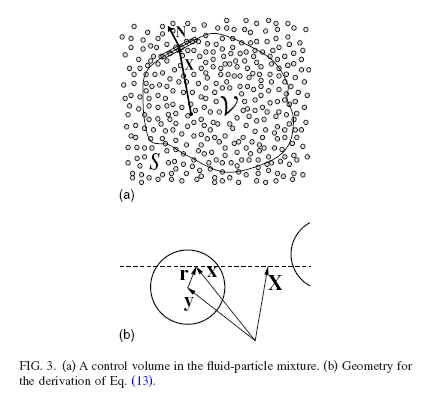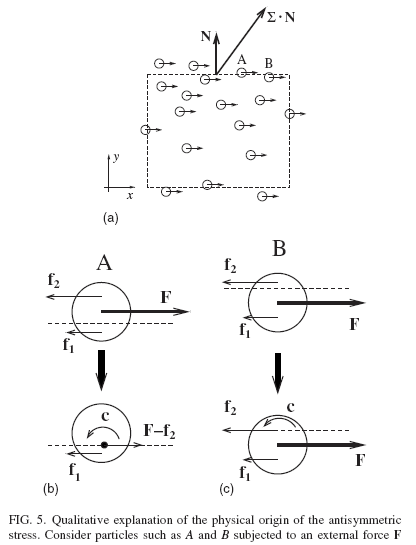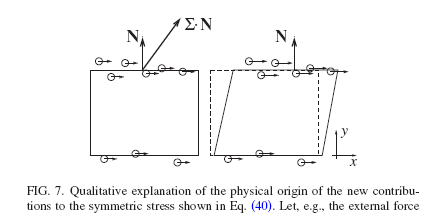The Annals of Exploratory Science
Homogeneous Mathematical Schemes for Heterogeneous
Multiphase Fluids - 14 Years After 1998 Analysis and Criticism
Thursday, 25-Apr-2024 18:10:22 GMT
10-04-2012 Well, after approximately 14 years we felt the need of returning
for observation of what have been happened in the field of Polyphase (Multiphase)
Fluids Transport through these years. We can include in this category and fluid - solid particles
suspensions.
As a result of our analytical review in this field in ~1997-1998 we came up
with a few texts some of them are hanging in this website since ~2003:
The need to return to this field was stemmed from the needs in addressing the
similar ideologically situation in the particle physics - when the sub-atomic
particles are accepted as the structured very small - but PARTICLES, not
point-masses as it is frivolously given in particle physics since the
beginning of XXth century.
But here we will be talking exclusively on the polyphase fluids theory and
mathematical implementation of governing equations in the area.
Turning back ~15 years we recollect that at that time from the all significant
and influential studies we distinguished just a few authors, who's work
deserved to be analyzed. Among them and of A. Prosperetti.
Now we are looking into more of his contemporary work to seek some advancement
in his attitude and results in the same field of polyphase fluid transport.
Starting with this book:
Prosperetti, A., and Tryggvason, G., Computational Methods
for Multiphase Flow, Cambridge University Press, Cambridge, (2007).
What can be said here is not a full line of unneeded formulations, but we
would like as to continue our disassembling of the techniques of Prosperetti
and co-authors.
We can read in the introduction that:
"Thanks to high-speed computers and advanced algorithms, the important field
of modelling multiphase flows is an area of rapid
growth. This one-stop account - now in paperback, with corrections from
the first printing - is the ideal way to get to grips with this topic, which
has significant applications in industry and nature. Each chapter is written
by an acknowledged expert and includes extensive references to current
research.
All of the chapters are essentially independent and so the book can be used
for a range of advanced courses and the self-study of specific topics. No
other book covers so many topics related to multiphase flow, and it will
therefore be warmly welcomed by researchers and graduate students of the
subject across engineering, physics, and applied mathematics."
Our comment:
We would say - that this area not in a
"rapid growth," but rather that it is in stagnation as we told on that in 90s
to some of the closest associates and co-workers. We even wrote some text in
1999-2000 analyzing the methods of physical and mathematical nature used in
polyphase flows, transport -
Contents
..........
Chapter 6: Lattice Boltzmann models for multiphase
flows - p. 157
Our comments:
They don't tell to students that the Boltzmann's equation is incorrect
itself! And this is the deceit of students, scientific fraud.
Already for many years the publications by Chines researcher C.Y.Chen had
shown in numerous ways the wrong analysis and development of the Boltzmann's
equation -
That is not the accusation in regard of Boltzmann himself - he did what the
base had been known to that time at the second part of the XIXth century in
mathematics and physics.
For a few decades it is already known that the techniques used by Boltzmann in
analysis of statistically formulated clouds of particles is incorrect -
Nevertheless, students are being taught on this flawed technique. Money is
being spent in the tremendous amounts on this "research."
......
Chapter 8: Averaged equations for multiphase flow
- p. 237
almost 47 pages in this chapter ?
Our comments:
Only in the page 237 the formulation of mathematical governing equations is
coming into a view.
We are introduced to the mathematics of multiphase transport as on the p.239:
"We express the infinitesimal amount of

 in terms of density
in terms of density

 (? it was written as this) per unit mass as
(? it was written as this) per unit mass as

A general statement for the balance of the total amount of
 in the averaging volume
in the averaging volume
 can then be written as
can then be written as

 "
"
where
"
 (e.g. the stress when
(e.g. the stress when
 is momentum)", and "interface in general moves with a local velocity
is momentum)", and "interface in general moves with a local velocity
 "
"
Well, in the old way of Gauss-Ostrogradsky theorem - but
where they can get an "infinitesimal amount........volume" ??
There is no such thing in polyphase media as the "infinitesimal amount........volume."
They just wrote this equation without a thought on physics and mathematics.
Good,
that means we can say that this equation (8.2) which is the cornerstone one is incorrect,
period. Of course, we can not teach on Polyphase Fluids so good fund-raisers - that
means with regret we would not write here - What is the correct equation would be?
Further, we put here in and discuss just the selected randomly flaws - in writing before equality (8.4) "the
simple result" authors and editors of the book deliberately avoided to say -
that this "simple" result is actually the part of the heterogeneous theorem of
Gauss-Ostrogradsky type - the WSAM theorem (by Whitaker, Slattery, Anderson,
and Marle)

this part of the book with this equality in such circumstances usually named
as a plagiarism - when important, critically important part of the text,
mathematics is just delivered and that's it. No authors, no discussion.
This "simple" result before 1967 nobody (NOBODY) was able to
find and prove.
Authors (and of editors responsibilities) of this piece are saying "simple" without references
to the proper paradigm shift and real authors - because otherwise
they must recognize that for more then 20 years in polyphase fluid engineering, physics they
could not understand - and don't understand up to the completely new techniques, theory
for Polyphase Heterogeneous media two-scale (at least) modeling!?
Then, as it is said
"the 3rd phase/stage (of great discovery/innovation)
realizes when adversaries start saying that the discovery is principal, but
everybody has known of it and they particularly have been working on that
right along (and for quite a time)."
The one more study seems worth to
consider in a comparison to old works by A.Prosperetti is the recent paper by old
co-authors:
Zhang, Q. and Prosperetti, A., "Physics-Based
Analysis of the hydrodynamic Stress in a Fluid-particle System,"
Phys. of Fluids, No. 22, pp. 1-17, (2010).
In the introduction authors write the well known first sentence, but in the
second they have particularly excused themselves for the >15 last years
when they know the linear methods of HSP-VAT - I.Catton in 1997-98 let to know
to A.Prosperetti that there are other methods, approach, science that the one
he used up to that time - the statistical treatments for governing equations
of polyphase (usually two phase is being treated) fluid (gaseous) flow.
Already over the 50 years since the nuclear reactors boiling area that has
been taken as for the refinement of the basics - in ~60s.
There is not much of the progress since that - and that because of the reason
that the way they produce that science it cannot formulate the correct
physical and mathematical fundamentals.
They cannot apprehend other methods than what they had been taught in their
time of graduate students - the homogeneous physics basics.
So, for near 50 years workers in the field of polyphase transport are just loading and reloading the same
problems and use the more and more of the computing power.
That is not helping anyway when the base is of the Ptolemy's origin.
Actually, in the introduction authors write:
"The closure of the equations obtained by formal averaging procedures has proven particularly intractable in the case of disperse flows
due to a variety of factors such as nonlinearity of the equations, long-range particle-particle interactions, absence of a
clear separation between micro- and macroscales, and others."
Our comments:
This is the incorrect statement, and we
understand where it was appeared from? That is because - a) wrong
modeling equations, at first; b) wrong simulation mathematics and procedures.
We do not need to explain why it is - authors need to study our works, in this
field else, and this is because nobody else in the field have solved these
tasks, including even the analytical solutions. Study Whitaker's and a few
other researchers work, but of nobody of conventional one-scale homogeneous
school of thoughts as we see in the reference list.
We read further in this study:
"In envisaging a disperse fluid system as a complex continuum, one recognizes
that the particle-fluid forces are
internal to the mixture and therefore cancel in formulating a combined momentum equation for the two
phases.
"
Our comments:
This is also the incorrect statement -
again because authors don't know how to develop the governing equations.
Regarding many critical points given in this review after ~14 years absence of
interest to A.Prosperetti's research, we won't be able to provide the hints on
how to do this correctly. This suggestion does not work for these authors,
they do not listen. More on that - they cannot hear a critique.
Going back to the paper, we would say that the ground laying equation (4)

is the one that is not correct in its formulation.
In the equation (10) at first the question arises - What are these angle
brackets
 mean
mean

that there is no formal definitions of averaging operators. Here is the
particle number density. But later one to learn that the absence of averaging
definitions is done on purpose.
In one occasion on p.2 it is given as the surface averaged contribution,

while in the equation (9) it is said that "the angle brackets average over all the particles in the
cylinder C." So, (10) is the phase average definition - obvious result
following the WSAM theorem, which authors don't know about?
Going further we find equations (47,48)

The linearized total mixture momentum equation takes
the form

in which  is the deviatoric
part of the symmetric stress and
is the deviatoric
part of the symmetric stress and  is the mean mixture density."
is the mean mixture density."
As one can see these equations (47) and (48) have such the formulation that
the all previous derivations on 8 pages of this paper have no sense to discuss
upon. Because these two are the well used, conventional homogeneous medium fluid
dynamics equations - no separate phases treatment, only imagination of
treatment.
In "Potential Flow" section in the paper it is the interesting to read - what
and how authors re-interpret their study [24] of 1994 (24. Zhang, D.Z. and
Prosperetti, A., (1994), "Averaged Equations for Inviscid Disperse Two-Phase
Flow", J. Fluid Mech., Vol. 267, pp. 185-219, 1994) which is analyzed in our
review text in the internet -
This analytical text is known from ~1998-1999 and hangs in the internet for
~10 years. Prosperetti does not listen. He can not listen or read other than
conventional (meaning mostly wrong, obsolete) polyphase dynamics work.
It is interesting - whether Prosperetti will be able to formulate the
correct polyphase mathematical statements (not talking about the scaled
solutions) up to the retirement.
R.Santilli named this deliberate avoidance as -- the
"scientific accountability".
In his 1984 work (" Ethical Probe of Einstein's Followers in the USA: An
Insider's View,"
354 pages, 1984) on ethics in the US physics R.Santilli wrote on page
85:
"Physical research is (hypothetically) based on freedom, but also implies
precise responsibilities of scientific and societal character.
Whenever a physicist uses public funds, he automatically acquires a direct
responsibility of societal character known as scientific
accountability.
Among the multiple duties of scientific
accountability there is that of taking in due consideration
ALL dissident views on his/her own research. This duty
alone is of multiply nature.
In fact, it demands the quotation of the dissident
views in ALL scientific material, from grant applications, to papers, to
books, to talks, etc. Furthermore, it demands publication of disproof of
dissident views whenever the later are published in refereed journals."
While A.Prosperetti along with other similar PIs use public funds for decades.
How many others wired in the same group the historians find out later on.
We can continue that:
In Appendix A:
The method of modeling and calculation of interparticle forces is incorrect.
They use the momentum equation for the particle material

in which  is the body
force of potential only type.
is the body
force of potential only type.
In Appendix B:
......"for rigid particles, we

where  and
and
 are the translational
and rotational velocities. .....
are the translational
and rotational velocities. .....
With the definition (B1), the average linear momentum balance for the mixture
can be written


On this might be said that:
Equation (B3) is incorrect, and incorrect greatly!
1) In the left hand side part both terms have been averaged incorrectly;
2) Also, - Who Does need this equation with multiple unknowns? One equation
and 4 averaged unknowns? This is an intermediate idea wiring to nowhere without
complete statement.
In our conclusions:
1) In this paper - firstly perhaps in the ~30 years of A.Prosperetti's
scientific research is given the correct pictures (Figures) and made an
attempt of the two-phase analysis of the REV's physics as of heterogeneous
task.
Before that the all common way of depicting the peculiarities of polyphase
physics and math had been given by Prosperetti similar to the paths that we described in the 90s in
our -
and in
;
The story of Dr. V.Kushch is being repeated by A.Prosperetti, well, in spite
of the warning, I am sure that I.Catton brought to Prosperetti's attention in 1998-99 at their
personal meetings in San-Francisco at the conference that had been chaired by
Prosperetti and where I.Catton delivered our review talk "A Critique of
Theoretical Models of Transport Phenomena in Heterogeneous Media."
And it is interesting also from this side: as soon as A.Prosperetti had been a
student of I.Catton.
Good homogeneous mathematics does not help here. Can not overcome the
"the historical feature of inhibition of apprehension, I
ascribe the hypothesis of formation of inhibiting apprehension to what is
called "hard wiring" of brain structure by cognitive scientists. People have
suspected and taught for at least centuries that once one accepts a theory
about rationalized phenomena, that the person
can not implicitly understand another kind of theory about phenomena or develop
it themselves,
and for centuries more, people have believed that it is
difficult for someone to change his ideas to accept a new idea;" - by
Edward Lewis in his "The Periodic Production of
Rationalized Phenomena and the Past Periodic Depressions"
Significant is that I.Catton who is much older of Prosperetti could overcome
this "inhibition of apprehension"
or
prevention
of apprehension we would say.
2) All this means the same about this way of polyphase research as we wrote in
the 90s - A.Prosperetti throughout these 12-14 years since that has not found
the ways on - How to make the stress averaged?
We said on that to I.Catton in ~1997-98. This is true for another ~14 years.
Well, other workers don't know this anyway. Never mind, but now Prosperetti
and co-authors use at least the volume averaging methodology. Not correctly,
with omissions due to lack of knowledge, education, but the figures
are drawn as they should be - with the intersection of particles, second
phase droplets, meaning that both phases should be crossed out
(that Prosperetti has not known how to treat this about before
and others even don't know about this):



Regarding the some Figure captions - Prosperetti needs to learn more from V.Kushch studies and from
our open publications.
That's good, at least they understand what was said on that in 1998-2000 in -
I hope that they understand that they "invented" the Wheel. All that kind of analysis
and more - on stress averaging, for example, have been already done in our past work and publications,
partly with I.Catton.
3) It seems that A.Prosperetti is the "Wheel-Reinventor" or would be also.
Prosperetti already for ~15 years doesn't know - What to do next, if the
equations seems are wrong? The question is - Whether he will be able to
recover that f... "Wheel" to the surface before retirement? Anyway, it has
been done by others for more than 15 years, so let them try.
Referred (in article) papers are all over the same as through the last like 50 years about -
assurance, formalism of modeling (incorrect), strain-stress relationship
(incorrect), potential flows, etc.
But get funding throughout these ~30 years on the same agenda, same kind of
modeling equations - that are incorrect mostly.
4) Well, that also means the money (tens of millions of dollars at least) that
has been spent on polyphase media studies, theories, modeling and simulation,
experiments (they need to be analyzed, reduced with the appropriate theory)
by a number of US agencies including the famous (at some time in the 1990s - beginning
of 2000s) programs on two-phase transport (momentum, mass, energy, etc.)
run by NSF, DOE, others, were spent for a small, often misleading
gain. Prosperetti, meanwhile, is the acknowledged member of the two-phase transport research community.
5) It is necessary to say, I am warning again as in other places of this and other websites - there is no
personal hunt. This is all about wrong things in physics, and who is doing the wrong
things - often knowingly, we might say.
6) We might find possibility to comment and on the other's work in polyphase transport field.

UNDER CONTINUING DEVELOPMENT


Copyright © 2001...Thursday, 25-Apr-2024 18:10:22 GMT V.S.Travkin, Hierarchical Scaled Physics and Technologies™

 in terms of density
in terms of density

 (? it was written as this) per unit mass as
(? it was written as this) per unit mass as

 in the averaging volume
in the averaging volume
 can then be written as
can then be written as

 "
" (e.g. the stress when
(e.g. the stress when
 is momentum)", and "interface in general moves with a local velocity
is momentum)", and "interface in general moves with a local velocity
 "
"


 mean
mean





 is the deviatoric
part of the symmetric stress and
is the deviatoric
part of the symmetric stress and  is the mean mixture density."
is the mean mixture density."

 is the body
force of potential only type.
is the body
force of potential only type.

 and
and
 are the translational
and rotational velocities. .....
are the translational
and rotational velocities. .....





